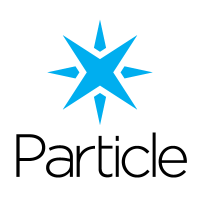Back to school for IoT

Jonathan Gladbach of Particle
The IoT industry continues to grow and develop; but not nearly as quickly as most of us would like. So says Jonathan Gladbach who is head of growth at Particle. He believes that the world-changing applications we’d envisioned a decade ago still seem heart breakingly far away today.
There are a lot of different variables behind that shortcoming, but one of the most daunting is the cavernous Internet of Things (IoT) skills gap.
Today, very few engineers have the hardware, firmware, software, and cloud experience to develop an IoT product. And yet, the majority of businesses are either currently investing in IoT initiatives or plan to in the next year. Clearly, the talent pool needs to catch up with demand quickly.
To help in that effort, Particle has begun working with a number of universities to help encourage and empower students to pursue IoT. The current pool of professionals that can competently build IoT prototypes and products is far too small to support the projected need for IoT. By partnering with universities, Particle believes a change in the labour market that addresses these IoT skills gaps can be fostered.
This helps drive adoption of IoT more generally in the following ways:
- Encouraging students to think about IoT as a career, which leads to Technology and Business Innovation.
- Enabling IoT project success by increasing the labor pool of qualified engineers, business people, and entrepreneurs.
- De-risking development of IoT by sharing best practices for IoT development.
Hiring students who come out of IoT- specific educational programs or workshops can give Particle a head start on its competition. These graduates arrive on the job with an understanding of IoT and how to build IoT models already at their disposal. This pre-existing expertise will enable businesses to leverage IoT technology faster and with better outcomes.
Here’s how Particle is working with universities to help solve the IoT skills gap.
- Particle partnered with Carnegie Mellon University to support their Internet of Things (IoT) educational program, working directly with CMU’s Integrated Innovation Institute. As a valued partner, Particle has enhanced CMU’s program with input into the syllabus, guest speakers, and hardware donations for student laboratory sessions. This collaboration has supported the growth of the Institute’s IoT curriculum, which now includes four dedicated courses.
- MIT recently launched its IoT Bootcamp, which invites students from all backgrounds to learn about sensing, connectivity, inference, and action from Institute faculty and industry leaders. Particle is providing the Bootcampers access to Photon and Electron hardware and the Particle Cloud, allowing students to experience these cutting-edge IoT solutions firsthand. Students will have the ability to incorporate Particle’s devices into their team projects, accelerating prototyping and simplifying any necessary “pivots.”
 The program is already seeing some promising results. The paper, “Synthetic Sensors: Towards General Purpose Sensing” by Gierad Laput, Yang Zhang and Chris Harrison is of the Human-Computer Interaction Institute, Carnegie Mellon University using Particle IoT technology, and were featured on MIT Tech Review.
The program is already seeing some promising results. The paper, “Synthetic Sensors: Towards General Purpose Sensing” by Gierad Laput, Yang Zhang and Chris Harrison is of the Human-Computer Interaction Institute, Carnegie Mellon University using Particle IoT technology, and were featured on MIT Tech Review.
In addition to formal educational applications, Particle also now sponsors hackathons at Stanford, Princeton, Duke, MIT, Vanderbilt and Penn State. Particle has worked with partners to create new judging categories, including “Best IoT Solution”, and students have demonstrated exciting acuity in their ability to prototype in a short period of time with Particle products.
Overall, an industry can only be as good as the professionals which comprise it. So, to help give IoT the best odds at greatness, Particle is investing in its future engineers, entrepreneurs, and leaders.
The author of this blog is Jonathan Gladbach, head of growth at Particle
Comment on this article below or via Twitter @IoTGN
